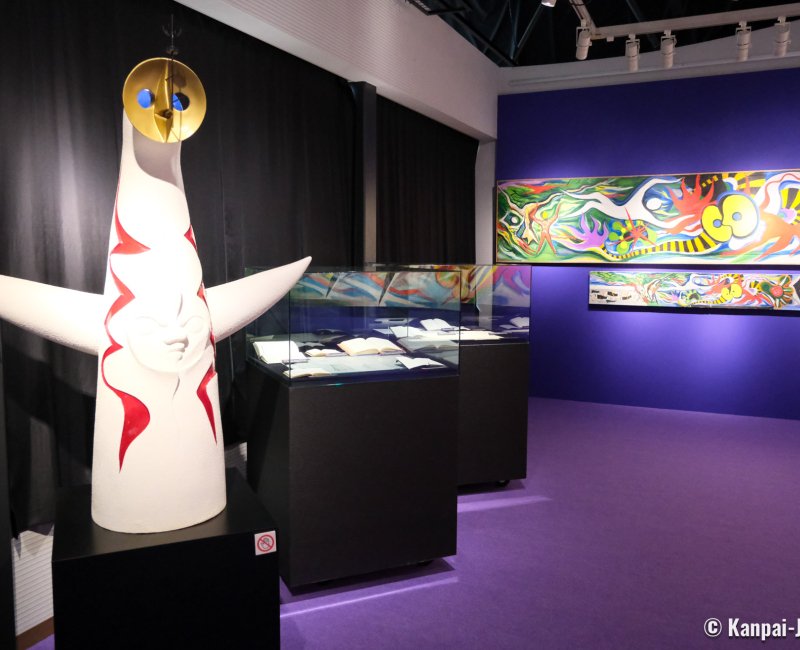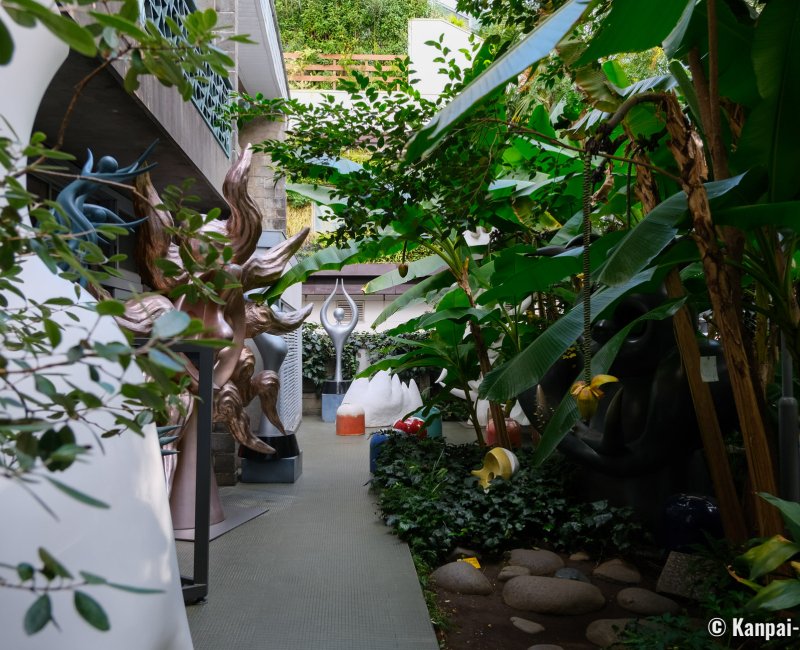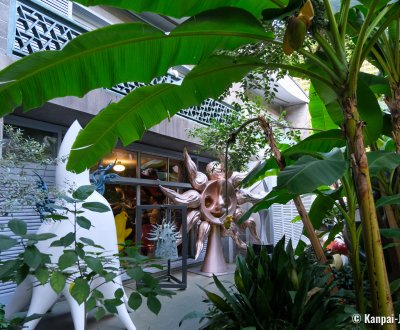Taro Okamoto Memorial Museum
The Artist’s Studio in the Heart of an Upscale Neighborhood
Taro Okamoto Memorial Museum is a small museum located in Minami-Aoyama, near Omotesando avenue, in the west of Tokyo. It is hosted in the Japanese artist’s former home and atelier, holding various exhibitions themed on his works and his influence on contemporary art.
On a bystreet between the Nezu Museum and the former Kotto-dori antique street, Taro Okamoto Memorial Museum opened in 1998 in the home studio of Taro Okamoto (1911 – 1996), a Japanese artist, painter, sculptor and scholar who deeply impacted popular culture, especially in Japan.
One of his well-known influential artworks is Tower of the Sun, that appears in 20th Century Boys, a manga by Naoki Urasawa whose story involves Osaka’s Expo 70. Likewise, Okamoto’s famous quote "Art is an explosion" (芸術は爆発だ Geijutsu ha bakuhatsu da), has become the motto of one of Naruto’s characters.

A multi-talented artist
Born in a well-off artistic milieu, Okamoto settled in Paris as soon as 1929, with the primary intent to study painting. There, he frequented the same artistic and literary circles as Picasso, Max Ernst or George Bataille, and even took part in the Abstraction-Création collective in the middle of the 1930s, as an attempt to counteract the influence of Surrealism.
Okamoto was an ethnology enthusiast and studied under anthropologist Marcel Mauss. He was also interested in primitive arts, especially in Japan’s Yayoi and Jomon periods, an aspect that is underlying his work.
As World War II flares up, he was forced to go back to Japan in 1940, and was drafted and deployed in China. He returned to Japan in 1946 and resumed his artistic activity. In the meantime, he helped democratize modern western art and his ethnographic researches contributed to the reassessment of postwar Japanese aesthetics.
Notwithstanding the medium, his style associates representational and abstract art, producing artworks that are strange but brimming with life force, while still being enjoyable by a general audience. Okamoto notably created a mural for the Yoyogi National Stadium in view of Tokyo’s 1964 Olympic Games 🏅, and participated in the organization of 1970’s Osaka Universal Expo.

Family house and studio
The Memorial Museum is homed in the 2 levels of the artist’s house and studio, designed by architect Junzo Sakakura in 1954. The building occupies the property of the former Okamoto family house, that was destroyed (along with his prewar artworks) in an aerial bombing.
The garden’s lush vegetation is hiding the front of the house. On the grounds, a short concrete path, bordered by a cafe on the left, reaches to the entrance, where visitors must take shoes off.
The museum is divided into 3 spaces:
- The shop at the ground floor and the temporary exhibition area at the upper floor are set in the former home;
- The permanent exhibition, at the entrance’s right hand, shows the artist’s studio and several of his colorful sculptures. Taro Okamoto’s wax statue, with a realistic expressive face, even seems to be greeting visitors lively;
- The garden, that can be accessed freely, is home to colorful and quirky creatures born from the artist’ imagination, both welcoming and slightly menacing, with grotesque faces that can be either smiling or expressionless.
Taro Okamoto Memorial Museum is an intimate and informal place to discover a major artist of the 2nd half of the 20th century. Bordering a quiet street, it provides a laid-back atmosphere, and pictures are allowed in most of the premises.
Okamoto fans may encounter other of his artworks while strolling in Tokyo, at a street corner or when taking a train 🚅 at Shibuya Station, that displays the giant mural Asu no Shinwa ("Myth of Tomorrow"). Kawasaki, Okamoto’s hometown, has also opened in 1999 the Taro Okamoto Museum of Art, a 5,000sqm facility where his bigger artworks can be fully displayed.

